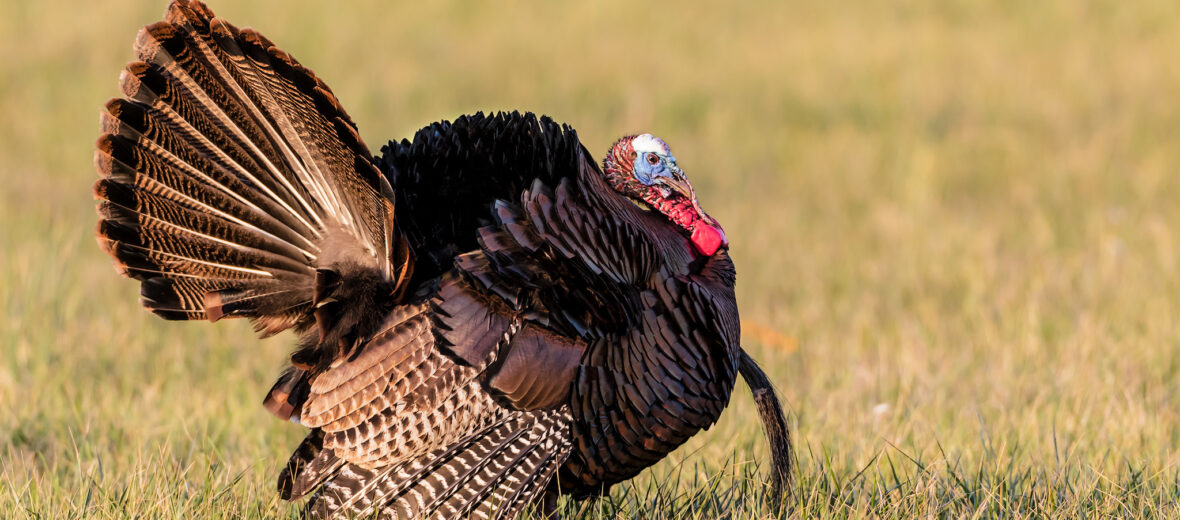
Run, Turkey, Run! – Book Recommendation

With Thanksgiving only one day away, can Turkey find a place to hide from the farmer who’s looking for a plump bird for his family feast? Maybe he can hide with the pigs . . . or the ducks . . . or the horses . . . Uh-oh! Here comes the farmer! Run, Turkey, run!
This story takes us through the traumatic day of one turkey who is just looking for a place to hide and escape the farmer. He searches all around the barnyard for a safe place to wait things out until Thanksgiving is over! Kids are going to love the storytelling and the plight of the frantic turkey. I created a little poem to go along with the story that includes options for body percussion. Read on to see everything that’s included and some songs that you could easily pair with this fun story.
The Thanksgiving Peacock
Years ago when I first started using this book in my classroom, I thought to myself “wouldn’t it just be perfect to have a turkey puppet to help tell the story?” My favorite puppet maker, Folkmanis, had a turkey puppet that had long since been out of production. They were hard to find and the ones that I could track down were expensive. Surprisingly there were not many other turkey puppet options out on the market. I kept looking but didn’t really find any options.
So, I turned to the puppet stand in my classroom and looked through the puppets that I already had. What could I use to tell this story? That’s when I came upon the idea of the “Thanksgiving Peacock.” You see, I didn’t have a turkey but I did have a beautiful peacock puppet that I had not figured out how to use in the classroom. It had been given to me as a present and had been sitting on the sidelines waiting for a chance to be utilized in a lesson.
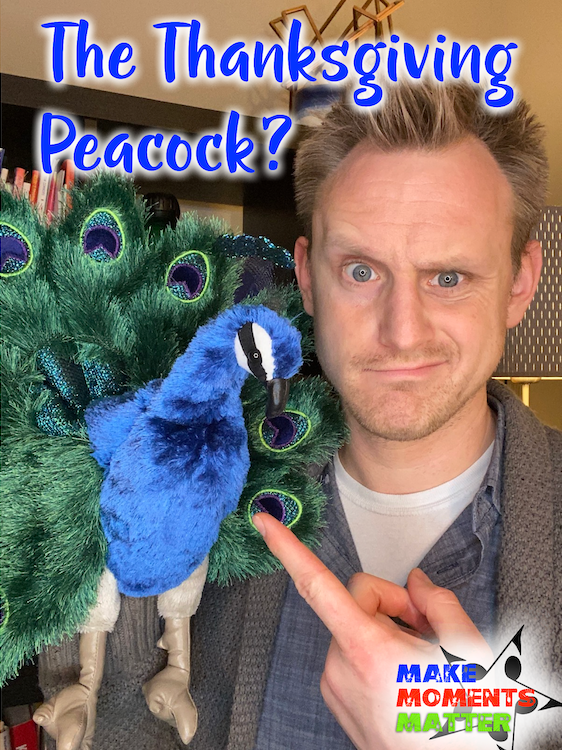
I told students that I had a bird who was so excited to tell them about an upcoming holiday and all the kids squealed that it would be a turkey. Then pops out the peacock and he is FRUSTRATED. “Why should the Turkey get the spotlight all fall. It’s not fair! Turkey this and turkey that. They dedicate a 5k to him every year (the Turkey Trot). He gets his own balloon at the Macy’s Thanksgiving Day parade. Kids all around the school are doing crafts and coloring pages dedicated to that terrible turkey. Even you kids sing songs about turkeys every year. Well I’ve had enough and I’ve decided that Thanksgiving is now the holiday for PEACOCKS!”
I try to reason with the Peacock to warn him that Thanksgiving for turkeys is not all its cracked up to be but the “Thanksgiving Peacock” just won’t listen. He’s made up his mind that he wants to be the new official bird of Thanksgiving. “But wait,” I say, “do you really know what happens to the turkey at Thanksgiving?” Kids are jumping at the bit to tell the peacock what happens to turkeys and then I say, “Well, I’ve got a great book that will definitely clear things up. How about we read the book and ask the peacock afterwards if he still wants to be the official bird of Thanksgiving…”
Want to get your own peacock? Here’s on that you might love!
Reading Through the Story
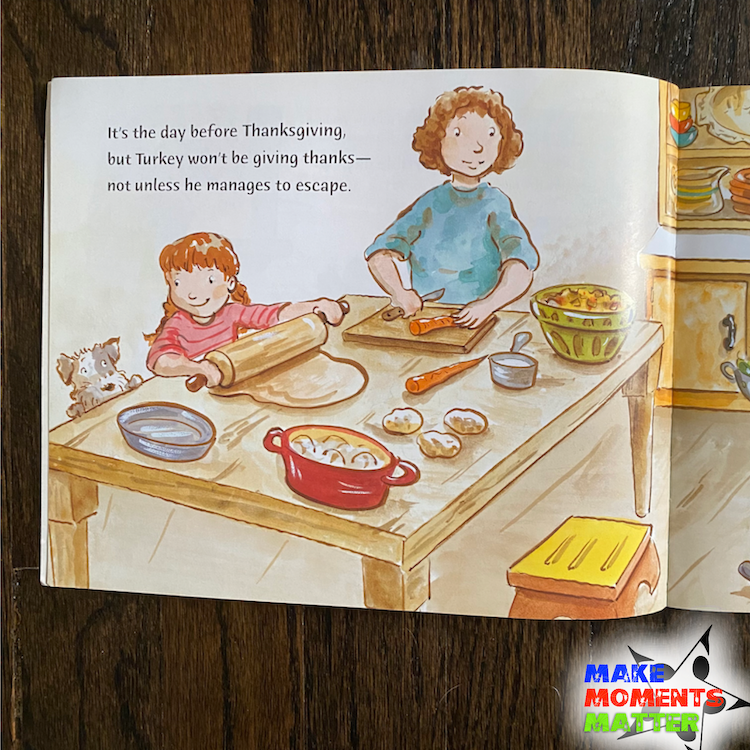
I start out by reading just a page or two into the book. “Turkey is having a terrible day. It’s the day before Thanksgiving , but Turkey won’t be giving thanks- not unless he manages to escape.” On this second page we see the inside of the house and find a family preparing food.
At this point I stop and ask students about what they see. Can we make out what they’re preparing? “Is that a carrot? Are those potatoes or bread rolls… or maybe dumplings? Is the little boy holding a colander of green peas or lettuce?” We talk about what we see in the picture. While the illustrations are great, they’re not completely clear. We can’t definitively tell what’s on the table. If you look on the table near the red pan you’ll find something brown and roundish but we can’t be completely sure what food it is. We use our context clues and pull on the information we know about kitchen to make the best guess. Probably rolls or potatoes instead of steamed dumplings. I take this step because so much of the rest of the book is about compare/contrast and not being fooled by the location and clues given on the page.
As we turn the page we read “Run, Turkey Run! Clompity-clomp, here comes the farmer.” The farmer is coming to get the turkey… to turn him into Thanksgiving dinner! We takes second to talk about the “clompity-clomp” that we just read. What’s making that sound? We talk through what it could be and kids almost always decide it’s the sound the farmer’s boots make when walking away from the house. Then we add the poem below:

The poem I’ve created is pretty simple and short but it’s easy to adapt and use for multiple purposes through the book. When first introducing the poem we read the text (or for younger grades I speak it to them and then have them repeat). We say it once or twice and then I remind kids that we’re speaking this TO the turkey and he’s in a good amount of danger. They can’t say the words with their normal reading voices but need to add the emotion of the setting. We need to convey that this is urgent. Our voices need to be more excited and emotional. We should sound animated and alarmed, not blank or boring.
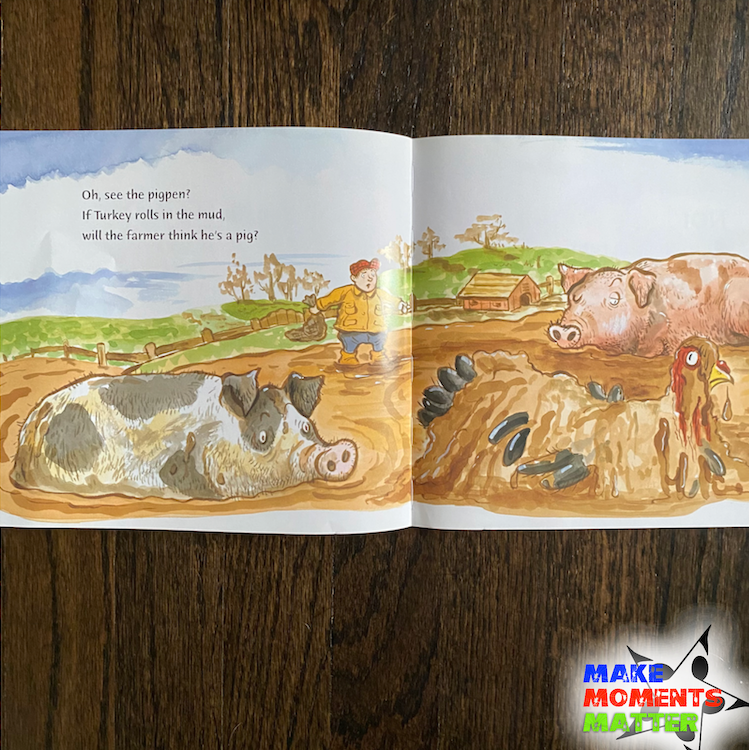
We turn to the next page and find that the turkey is hiding in the pig pen. He’s rolled around in the mud and is hanging out with the pigs. Maybe he’s even started saying “oink oink.” But will this be enough? Will the turkey really confuse the famer? No. Farmers look at barnyard animals all day. It doesn’t matter that the turkey has disguised himself and is in an unusual place for turkeys… the farmer can see through this ruse! So we urgently say our poem to the turkey again!
This time the farmer chases after the turkey and we read “muckity-muck, here comes the farmer.” I say to the students “oh, that must be a mistake. It’s supposed to be clompity-clomp. I guess the author messed up.” The kids then have to explain to me why the sound has changed. The farmers boots are what’s making the sound and since he’s walking through the mud of the pigpen the sound changes. Sometimes we talk about other sounds that we could substitute here: squish, smoosh, squirt, etc. Again, I play dumb because I want students to work out that 1) the muckity-muck is a sound made by the farmer and 2) the sound has to change because he’s walking through a different material than before so his boots will make different sounds.

Then the turkey tries to look like and hide out with the ducks in the duckpond. He has minimal success again as the farmer can easily spot the difference between a turkey and a duck. The sound changes from “muckity-muck” to “splashity-splash” and we repeat our poem once more. This time I ask students to pat their knees along with the rhythm of the words. They can pat with hands together or separate/alternating. We try both options and choose our favorite option: together or alternating.
The turkey tries to hide one more time with the horses to no avail. The farmer steps in a feed bucket and his feet start making a “clankity-clank” sound. We again talk about why the sound is different. This time we see if we can change our body percussion. Instead of patting, we clap the rhythm of the words. We talk briefly about which was easier (claps or pats) and which we liked better. Kids have lots of differing opinions about this but I like to have the discussion so they can think about if they liked the clap vs the pat because it fits better with the story, if it’s easier to do, if they think it conveys urgency for the turkey, etc. We then try to mix the two. Maybe pat on the words “run turkey run” and clap the “here comes the farmer, run run run.”
Eventually the barnyard animals decide that the turkey needs to leave the barnyard to escape the farmer. The farmer knows the barnyard too well and there’s no way the turkey can trick him into thinking that he’s anything but a turkey. He needs to escape to a place and a setting that the farmer doesn’t know as well. So, the turkey races away from the farm and the farmer chases him, making a “crunchity-crunch” through the fallen leaves. This time we try to snap the rhythm and depending on the grade level you’re trying this will the snaps may or may not work.
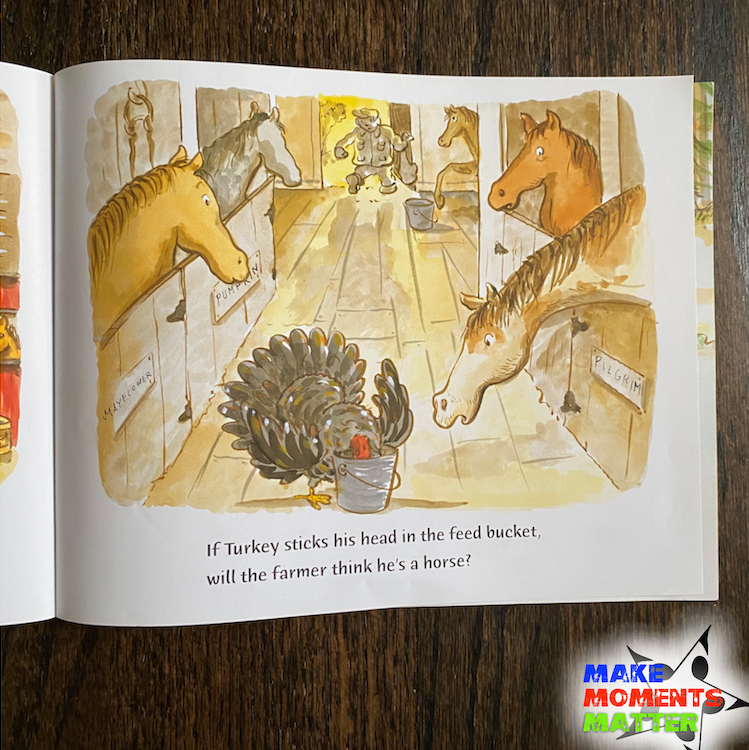
Even though I do this with first graders (usually) and snapping can be pretty difficult for them I still try it anyway. We then talk about if it was easy or tricky to do. Did they like it? Should we try it again? Could we mix up the body percussion and add in a snap? Maybe pat “run turkey run” clap “here comes the famer” and then snap “run run run.” If we decide to be fancy the “run run run” might turn into “pat, clap, snap.” Kids love to try different options.
The story rounds out with the turkey hiding in the forest. The farmer isn’t as familiar here so he’s not able to spot the turkey among the branches of the trees. The turkey is saved and the farmer’s family eats mashed potatoes, peas, and grilled cheese sandwiches for Thanksgiving dinner. However, the story isn’t over because the following day the farmer’s family takes a trip to the forest to find their next Christmas tree and discover… the turkey! That means we get one more good “run turkey run!” and another chance to pat, clap, and snap through the poem. This last time I ask kids if they can do the body percussion but without saying the words to go along with it.

We return to the “Thanksgiving Peacock” who after hearing the story has decided that he does NOT want to be the mascot of Thanksgiving. “What other holiday can I do” he asks. We go through options but he is not interested in anything we suggest. Halloween “oh the holiday where we get pumpkins and big sharp knives and cut into the…” “NO WAY!” He says. Valentine’s Day “oh, the holiday where we share and eat hearts…” “You eat hearts!” he screams. Easter? “Well, there’s already an animal for that. A bunny.” “Do you eat the bunny” the peacock asks. “No! Instead we always eat the eggs that we find.” “You eat eggs!” the peacock shrieks. And on we go.
What other songs could you pair with this book? So many options! A few songs that I’ve already written about might be perfect. Click these links to learn about “Five Fat Turkeys” and the song “Shoo Turkey.” If you’d like to see a video version of me going through this lesson check out this LIVE video from my Musical Monday archives. The lesson about the Thanksgiving Peacock starts about 8 minutes into the video.


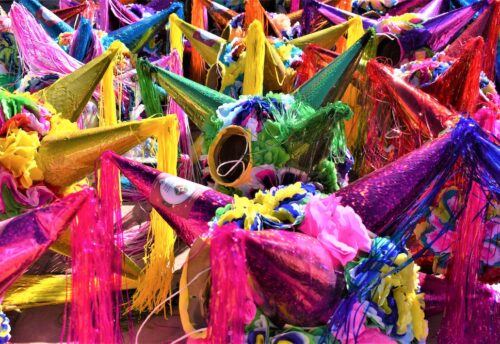
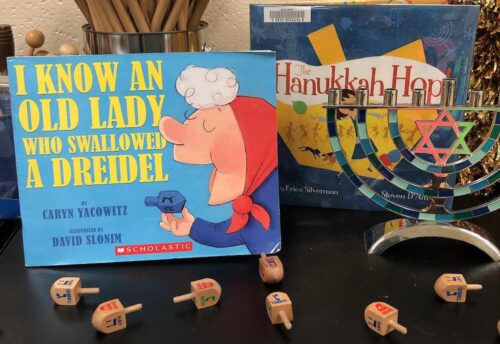
Leave a Reply